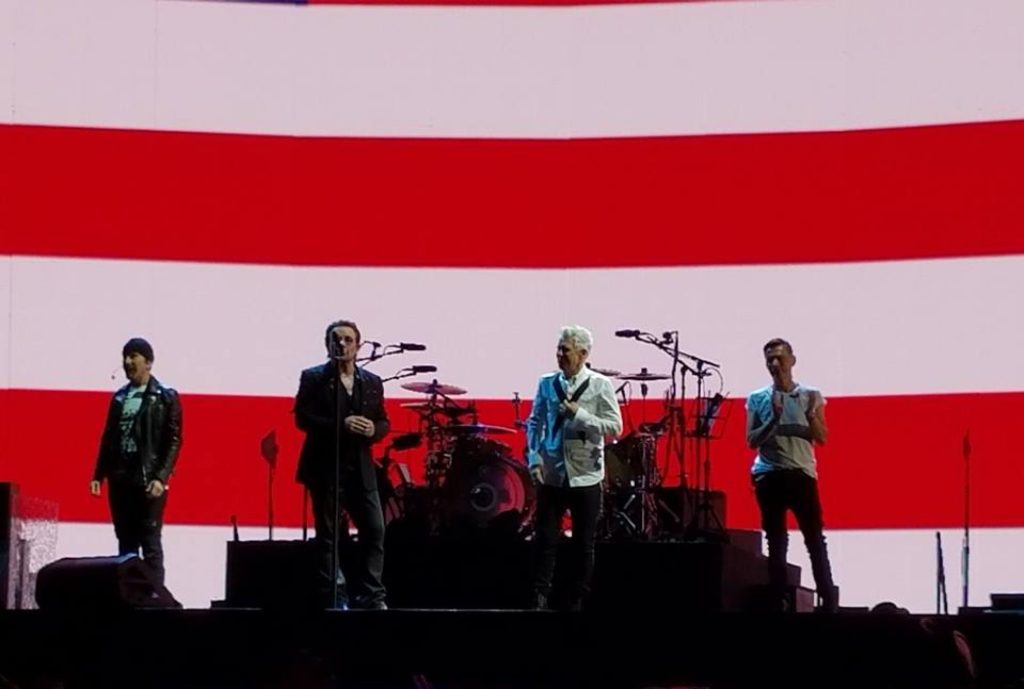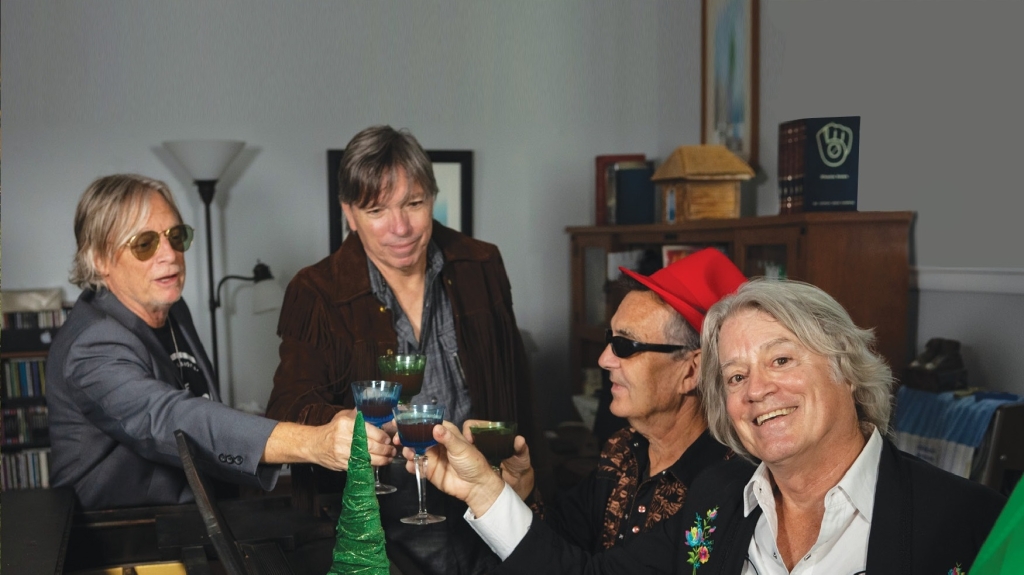
Dr. Neil Ratner has lived a life that not even Hollywood could come close to replicating within a fictionalized format. He was a production manager for Pink Floyd, a personal physician and friend to Michael Jackson, and developed a relationship with Nelson Mandela through charity work in Africa upon his retirement from medicine. The question as to how someone goes from an aspiring rock ‘n’ roll drummer in the 1960s to becoming an anesthesiologist to the stars in the 1980s is one that only the doctor himself can begin to answer, and in his new book, Rock Doc, he does just that.
Dr. Ratner was kind enough to speak with me recently about the book and what he wants readers to take away from his journey. As a writer, I’m tasked with determining whether or not the stories presented to me are worth telling, but his unique perspective on the world made this an easy decision.
MNOD: How did you first get involved in music?
Dr. Ratner: I grew up with rhythms in my head and they had to come out eventually. I was always tapping my hands on the table or my knees, so my parents bought me a drum kit and some lessons. I had two dreams as a kid. I was either going to be a rock drummer or a doctor. I moved to New York when I was in college and found a sublet in the East Village, which was at a time when hippies were still walking around all over the place. Rick Derringer lived upstairs from me and we became friends. Rick was in The McCoys, who had a hit with “Hang on Sloopy” in 1965, and one day he called me up to ask if I would be interested in being the road manager for Edgar Winter’s White Trash. I thought he was going to offer me a job as a drummer, but he thought that the manager position was suitable for me and a way into the business.
MNOD: You became involved with production on Pink Floyd’s 1973 “Dark Side of the Moon” tour. What was that experience like?
Dr. Ratner: Amazing. I knew Dee Anthony, who was managing Humble Pie, Emerson, Lake, and Palmer, J. Geils, and Peter Frampton. Dee hired me to collect money and ticket stubs during shows, which then led to me being offered to run live production for Emerson, Lake, and Palmer in London. I had the idea to start my own all-in-one production company, because there was nothing else like that at the time. Bands used different companies for different aspects of the show. I likened the idea to the circus where everything would be under one roof. Pink Floyd were just finishing up the album when they had the idea to do a tour and they partnered with my company to do it. I knew we were doing things that no one else did at the time, because we wanted to do the most technologically advanced tour that had ever been done up to that point. Peter Watts was a sound engineer for Pink Floyd and he knew some sound and lighting guys who were breaking off from another company, so we started something new out of that.
MNOD: In your book, you also discuss your time spent with Patti Smith before her career really took off. Can you talk about what she was like to be around in those days?
Dr. Ratner: Steve Paul was one of the strangest guys I knew in those days. He owned The Scene, which was a club in New York where The Doors and Hendrix played as well as all of the classic blues guys. Steve only wore these blue velvet suits and was a real character, but The Scene was really the only club of its kind in New York at the time. Patti used to hang out there and Steve introduced me to her. I knew she was a poet, but she hadn’t begun to write any songs yet. She was actually just starting to do performance art with her poetry, which was just amazing. She was punk before it existed and had an incredible mind. She always knew that she was going to make it and I believed that her piss-and-vinegar determination would make her successful.
MNOD: What made you decide to switch to a career in medicine?
Dr. Ratner: As I said before, I was either going to be a drummer or a doctor, and I started to realize that I wasn’t going to make it as a rock drummer on the big stage. I saw something on TV about medical students going through residency and I just had an epiphany.
MNOD: How did you end up attending medical school in Mexico?
Dr. Ratner: It wasn’t really a choice, per se. A lot of the medical schools I applied to weren’t happy with my rock ‘n’ roll background, because I had bounced around all over the place. The thing about American medical schools is that they’ve always been extremely difficult to get into due to the small number of spots available, so, even though I had a GPA over 3.0, I began to search for alternate opportunities. This was a crazy time, because the Vietnam War was ending and GIs were coming home to go to school, which made competing for spots even harder. There were a few medical schools around the world accepting American students, so I chose Guadalajara due to it having a good reputation for Americans being able to have success back home once school was finished. I had some history speaking Spanish in high school and college, so it ended up being a fit for me. I still had to take exams to show that I was proficient with the language, but it worked out well. I had to do a year of unpaid internship, which was an awakening for me.
MNOD: How did you first come to meet Michael Jackson?
Dr. Ratner: I was accepted into a surgical residency program, but I decided that being an anesthesiologist was what I really wanted to do. There weren’t a lot of office-based procedures being done during the mid-80s in New York, so I opened an office and I began to encounter a lot of celebrities. Most of the medical community was against administering anesthesia outside of a hospital setting, because of the risks involved. Michael called me about a small procedure that he wanted done and we connected right away. He knew that I wasn’t a typical doctor, because I had an earring, a pony tail, and an extensive background in music. We were able to talk on different levels besides just a doctor/patient relationship. Michael was a phone person, so, if he liked you, he would just call you out of the blue late at night to chat.
MNOD: What was the experience of touring with Michael like compared to other tours you had been a part of?
Dr. Ratner: I had done the touring thing before, but this was different. Being around him in public was difficult, because you had to react quickly in the event that you wound up separated among the crowd. Watching him perform every night was amazing to me, because the “Dark Side of the Moon” tour was the most technologically advanced tour of its time and, 20 years later, I was now seeing Michael put on the most technologically advanced tour of its time.
MNOD: What is something that you realized about Michael that the public may not understand about him?
Dr. Ratner: He was a human being just like you and me. He had needs, wants, and hang-ups just like the rest of us. It’s natural for people to judge him based on what they see and hear, but he was a different person from what you heard when I was around him. I was fortunate to be true friends with him and he acted like we were friends. He created a crazy life for himself with no real regard for how he was going to live it, so being the most famous person in the world certainly wasn’t easy.
MNOD: You spent some time at Neverland as Michael’s guest. What was your impression of how he was living?
Dr. Ratner: I was at Neverland on four different occasions. The first time was probably the most dramatic, because Michael called me about four or five days before the Super Bowl in January 1998 and said that he wanted me to come visit. I was a busy doctor at that time, so it wasn’t easy for me to have my patients covered while I was gone. Well, it was an opportunity that I didn’t want to pass up, so I flew out there. I wasn’t there as his doctor. It was very much just Michael and Neil hanging out as friends. He explained the Peter Pan motif as he took me from building to building as part of an exclusive tour. He had a pride in his eye about certain things and wanted me to know why Neverland was the way it was. Another time, I went with my wife, which was great, because it was just us hanging out with Michael and his kids, Prince and Paris. One journalist described it to me as going to Willy Wonka’s chocolate factory and I had the Golden Ticket.
MNOD: Why did you decide to write a book now?
Dr. Ratner: I’ve always felt that I’ve lived an interesting life and there were a lot of lessons I learned that I wanted to talk about. Michael died in weird way, really, so I felt that I owed it to my friend to get another piece of his story out there. The last time I saw him was in 2002. I want people to read the book and see another side of him.
MNOD: While putting the book together, did you find it easy to recall certain events or did you find yourself digging a little deeper for details?
Dr. Ratner: A lot of it was deep, because I found myself remembering certain things differently than the way they actually happened. The thing about Michael is that his life is chronicled so extensively that I was able to find videos on the Internet to fill in aspects of the story that I wasn’t sure on.
MNOD: What do you want readers to take away from the book?
Dr. Ratner: In the 1990s, I unexpectedly got involved in medical charity work. My wife and I went on safari to Northern Kenya, and I set up a clinic in the Samburu land for people living there. When I retired to Woodstock, my interest in charity work was rekindled by a local baker who was concerned about the HIV crisis among other things. We started International Community Bakeries to bring food to the poor in South Africa and Haiti. I want people to know that it’s necessary for all of us who are well-off to give back to those less fortunate. Out of everything I’ve done in my life, giving back to others is what has been the most rewarding. The other message of the book is to never let other people defeat you. Only you can defeat you and it’s not necessary to have only one job from birth to death. People can be anything they want to be if they’re willing to put in the time and effort to be successful.
Rock Doc by Dr. Neil Ratner is available now wherever books are sold.
Visit http://www.neilratnerrockdoc.com for more information.






Leave a comment